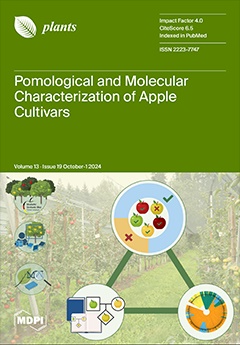Ver ítem
- xmlui.general.dspace_homeCentros Regionales y EEAsCentro Regional Salta - JujuyEEA SaltaArtículos científicosxmlui.ArtifactBrowser.ItemViewer.trail
- Inicio
- Centros Regionales y EEAs
- Centro Regional Salta - Jujuy
- EEA Salta
- Artículos científicos
- Ver ítem
Variation in Thickness of Embryo Covering Structures and Their Role in the Regulation of Seed Physiological Dormancy of Chenopodium hircinum (Amaranthaceae)
Resumen
Chenopodium hircinum, the putative wild ancestor of quinoa, is a source of traits that could improve the tolerance of crop quinoa to high temperatures. However, seeds of C. hircinum have physiological dormancy (PD), which is an obstacle for plant propagation and use in breeding programs. We studied the intraspecific variability in morpho-anatomical traits of embryo covering structures and their association with PD. We also evaluated the effects of
[ver mas...]
Chenopodium hircinum, the putative wild ancestor of quinoa, is a source of traits that could improve the tolerance of crop quinoa to high temperatures. However, seeds of C. hircinum have physiological dormancy (PD), which is an obstacle for plant propagation and use in breeding programs. We studied the intraspecific variability in morpho-anatomical traits of embryo covering structures and their association with PD. We also evaluated the effects of different dormancy-breaking treatments on PD alleviation and germination. Seeds were dispersed with a remnant perianth and a persistent pericarp that could be removed by scraping. The seed coat was formed by palisade cells impregnated with tannins, and the seed contained a thin layer of peripheral endosperm surrounding the embryo. In our investigation, the thickness of the pericarp (P) and/or seed coat (SC) varied among populations. Populations with higher P and/or SC thickness showed lower percentages of germination and water absorption. The combined dormancy-breaking treatment (bleach + perforated coverings + gibberellic acid) promoted dormancy release and increased germination. C. hircinum seeds showed non-deep physiological dormancy. Based on previous knowledge about quinoa, and our results, we conclude that embryo coverings, especially the seed coat, have an important role in dormancy control, imposing a mechanical restraint on radicle emergence.
[Cerrar]

Autor
Agüero Martínez, Paola Fernanda;
Cardozo, Leonardo;
Gómez, Carlos A.;
Lopez Spahr, Diego;
Baskin, Carol C.;
Bertero, Héctor Daniel;
Galindez, Guadalupe;
Curti, Ramiro Nestor;
Fuente
Plants 13 (19) : 2832. (October 2024)
Fecha
2024-10
Editorial
MDPI
ISSN
2223-7747
Formato
pdf
Tipo de documento
artículo
Palabras Claves
Derechos de acceso
Abierto
 Excepto donde se diga explicitamente, este item se publica bajo la siguiente descripción: Creative Commons Attribution-NonCommercial-ShareAlike 2.5 Unported (CC BY-NC-SA 2.5)
Excepto donde se diga explicitamente, este item se publica bajo la siguiente descripción: Creative Commons Attribution-NonCommercial-ShareAlike 2.5 Unported (CC BY-NC-SA 2.5)


